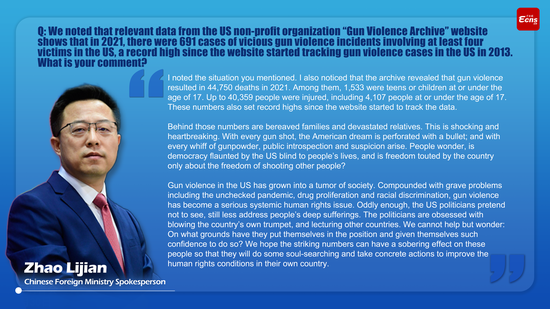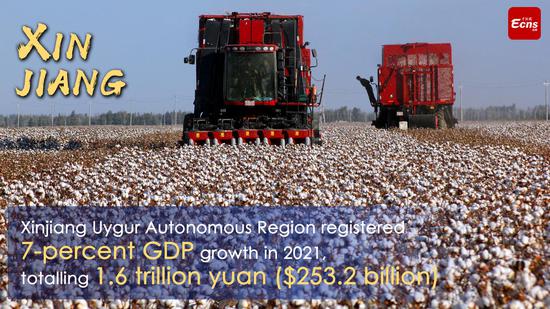The U.S. Federal Reserve on Wednesday said that it will soon be appropriate to raise its benchmark interest rate amid surging inflation.
"Supply and demand imbalances related to the pandemic and the reopening of the economy have continued to contribute to elevated levels of inflation," the Fed said in a statement after a two-day meeting.
"With inflation well above 2 percent and a strong labor market, the Committee expects it will soon be appropriate to raise the target range for the federal funds rate," the Fed said, referring to the Federal Open Market Committee (FOMC), the Fed's policy-making committee.
The central bank has kept the federal funds rate unchanged at the record low level of near zero since the onset of the COVID-19 pandemic.
But many Fed officials have expressed in recent weeks that they would be comfortable with a rate increase at the central bank's next meeting in March due to elevated inflation pressures.
The consumer price index rose 7 percent in December from a year earlier, the largest 12-month increase since June 1982, according to the U.S. Labor Department.
"While the drives of higher inflation have been predominantly located to the dislocations caused by the pandemic, price increases have now spread to a broader range of goods and services," Fed Chair Jerome Powell said Wednesday afternoon at a virtual press conference, adding inflation risks are "still to the upside" in the views of most Fed officials.
"We will use our tools both to support the economy and a strong labor market and to prevent higher inflation from becoming higher entrenched and watching carefully to see whether the economy is evolving in line with expectations," Powell said.
Fed officials' median interest rate projections released in December showed that the central bank could raise interest rates three times this year, up from just one rate hike projected in September, making a hawkish pivot to combat surging inflation.
"Since the December meeting I would say that the inflation situation is about the same but probably slightly worse," Powell said, signaling that the Fed could have more rate hikes this year.
"I think to the extent the situation deteriorates further, our policy will have to address that, if it deteriorates meaningfully further, either in the time dimension or in the size of the inflation dimension," he said.
The central bank also decided to continue to reduce the monthly pace of its net asset purchases, bringing them to an end in early March, as it exits from the ultra-loose monetary policy enacted at the start of the pandemic.
Meanwhile, Fed officials discussed the principles for reducing the central bank's nearly 9-trillion-U.S. dollar balance sheet, which more than doubled during the pandemic, but they have not yet made any decisions.
"The committee has not made decisions regarding the specific timing, pace, or other details of shrinking the balance sheet and we will discuss these matters in upcoming meetings and provide additional information at the appropriate time," Powell said.
"This is going to be a year in which we move steadily away from the very highly accommodative monetary policy that would put in place to deal with the pandemic," he added.
Following a rate increase in March, Jay H. Bryson, chief economist at Wells Fargo Securities, expected the Fed to raise rates 25 basis points per quarter through the third quarter of 2023, bringing the federal funds rate to 1.75 percent to 2.00 percent.
"The risks seem skewed toward the FOMC moving at a faster pace and/or by more than we currently forecast if inflation remains uncomfortably high," Bryson said Wednesday in an analysis.


















































 京公网安备 11010202009201号
京公网安备 11010202009201号